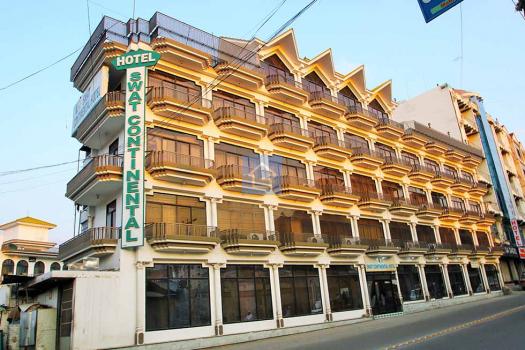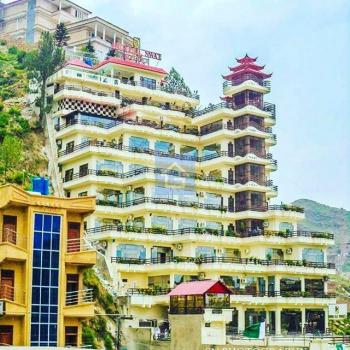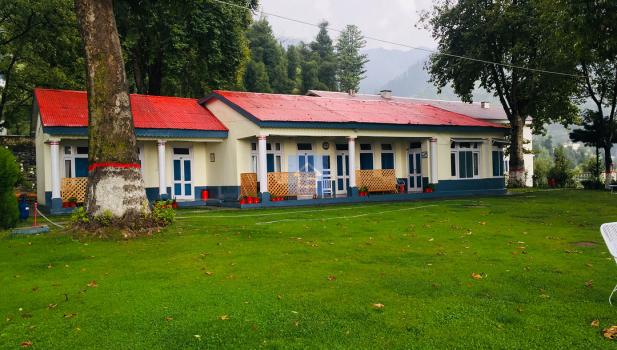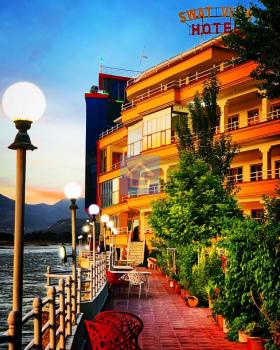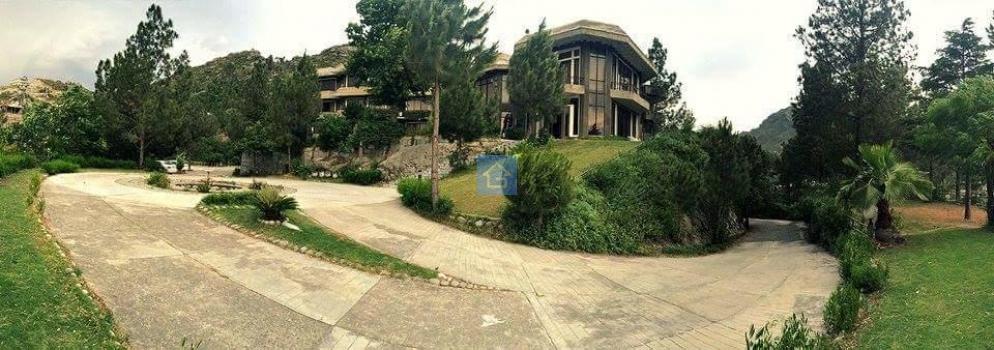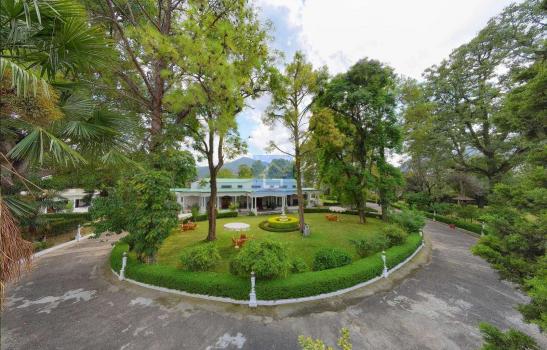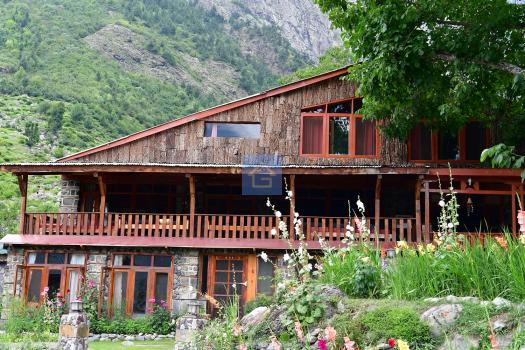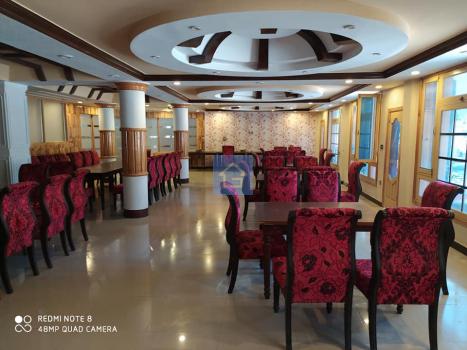- Home
- Browse Blogs
- Travel Destinations
- Sindh, Pakistan
Sindh, Pakistan
Sindh is the southeastern province of Pakistan. The province is associated with the river Indus and the Indus civilization as the river Indus ends here and the largest city of Indus civilization is also here. Cities in Sindh Karachi:- The largest city of Sindh Province ..
Sindh, Pakistan
Sindh is the southeastern province of Pakistan. The province is associated with the river Indus and the Indus civilization as the river Indus ends here and the largest city of Indus civilization is also here. Cities in Sindh Karachi:- The largest city of Sindh Province it is located in the south. With its 18 million population it is the largest city of Pakistan. Most of the International flights come to Quaide Azam International airport. Hyderabad:- The second largest city of Sindh was the former capital of the area. It is 170 Kilometers from Karachi and offers interesting options for culture tours Thatta:- The formal capital of Sindh the cradle of literature history and prosperity for the province now a very small town having ruminants of its rich past and the famous cemetery of Makli and Shahjehan Mosque. Sukkur:- The central city of Sindh located on the bank of the Indus river.
It was also one a historical city of the area. The city has many archeological sites, shrines and a clock tower from the English times. It is 500 kilometers from Karachi Larkana:- The home to the popular political party of Pakistan the people party. More importance of the city is its proximity with Moen Jo Daro the ancient city of Indus civilization. Mirpurkhas:- The southeastern city of Mirpurkhas is 70 kilometers from Hyderabad it is home the rich agriculture farms and the famous mangos from the area. Thar Desert:- The eastern desert of Sindh is rich in culture and natural beauty of its sand dunes. Jacobabad:- The town in the western Sindh Sehwan:- The city of the one of the most popular Sufi of Pakistan Hazrat Lal Shahbaz Qalandar :- The city of Kot DG he beautiful fort and the archeological site of Kot DG (Pre Indus civilization) Culture & History of Sindh Historically Sindh is home to the Sindhis. Different cultural and ethnic groups also reside in Sindh including Urdu-speaking Muslim Indians who migrated to Pakistan from India upon independence as well as the people migrated from other provinces after independence.
The Sindh is linked with Balochistan in the west and north, Punjab to the north, Gujarat, and Rajasthan of India in the southeast and east, and the Arabian Sea in the south. The main language of Sindh is Sindhi while all other languages of Pakistan are spoken here. Historically the Assyrians (as early as the seventh century BC) knew the region as Sinda. The Persians as Abisind, the Greeks as Sinthus, the Romans as Sindus, the Chinese as Sintow, in Sanskrit, the province was dubbed Sindhu meaning "Ocean" while the Arabs dubbed it Al-Sindh Origin of the name Sindh The province of Sindh and the people inhabiting the region had been designated after the river known in Ancient times as the Sindhus River, now also known by Indus River. In Sanskrit, sidhu means "river, stream". However, the importance of the river and close phonetically resemblance in nomenclature would make one consider sidhu as the probable origin of the name of Sindh. Later phonetical changes transformed Sindhu into Hindu in Old Persian.
The Greeks who conquered Sindh in 325 BC under the command of Alexander the Great rendered it as Indu, hence the modern Indus when the British conquered South Asia, they expanded the term and applied the name to the entire region of South Asia and called it India. Prehistoric period The Indus Valley civilization is the farthest visible outpost of archaeology in the abyss of prehistoric times. The prehistoric site of Kot Diji in Sindh has furnished information of high significance for the reconstruction of a connected story which pushes back the history of India by at least another 300 years, from about 2500 BC. Evidence of a new element of pre-Harappan culture has been traced here. When the primitive village communities in Balochistan were still struggling against a difficult highland environment, a highly cultured people were trying to assert themselves at Kot Diji one of the most developed urban civilization of the ancient world that flourished between the year 25th century BC and 1500 BC in the Indus valley sites of Moenjodaro and Harappa.
The people were endowed with a high standard of art and craftsmanship and well-developed system of quasi-pictographic writing which despite ceaseless efforts still remains un-deciphered. The remarkable ruins of the beautifully planned Moenjodaro and Harappa towns, the brick buildings of the common people, roads, public-baths, and the covered drainage system envisage the life of a community living happily in an organized manner. This civilization is now identified as a possible pre-Aryan civilization and most probably an indigenous civilization which was conquered by the invading Aryans. The Brahui language is possibly a remnant of the civilization which flourished in this region. Geography Sindh is located on the western corner of South Asia, bordering the Iranian plateau in the west. Geographically it is the third largest province of Pakistan, stretching about 579 km from north to south and 442 km (extreme) or 281 km (average) from east to west, with an area of 140,915 km (54,407 square miles) of Pakistani territory. Sindh is bounded by the Thar Desert to the east, the Kirthar Mountains to the west, and the Arabian Sea in the south.
In the center is a fertile plain around the Indus river. The devastating floods of the river Indus are now controlled by irrigation techniques. Karachi became capital of Sindh in 1936, in place of the traditional capitals of Hyderabad and Thatta. Other important cities include Shaheed Benazeerabad District, Sanghar, Sukkur, Dadu, Shahdadkot, Sehwan, Mirpukhas, Larkana, Shikarpur, Nosharoferoz, Kashmore, Umerkot, Tharparkar, Jacobabad, Ghotki, Ranipur, and Moro. A subtropical region, Sindh is hot in the summer and cold in winter. Temperatures frequently rise above 46 BC (115 F) between May and August, and the minimum average temperature of 2 BC (36 F) occurs during December and January. The annual rainfall averages about seven inches, falling mainly during July and August. The southwest monsoon wind begins to blow in mid-February and continues until the end of September, whereas the cool northerly wind blows during the winter months from October to January. Highest and lowest temperatures The highest temperature throughout Pakistan are usually recorded in - Shaheed Benazeerabad District (Previously called Nawabshah District) and Sibbi from May to August each year which rises to above 48-degree centigrade. The climate is dry and hot but sometimes falls to 0 degrees Celsius and falls to lower than minus seven in December or January once in a quarter of the century. Sindh lies between the two monsoons - the southwest monsoon from the Indian Ocean and the northeast or retreating monsoon deflected towards it by Himalayan mountains and escapes the influence of both.
The average rainfall in Sindh is only 15 to 18 cm per year, but the loss during the two seasons is compensated by the Indus, in the form of inundation, caused twice a year by the spring and summer melting of Himalayan snow and by rainfall in the monsoon season. These natural patterns have changed somewhat with the construction of dams and barrages on the Indus. Climatically, Sindh is divided into three sections - Siro (upper section centered on Jacobabad), Wicholo (middle section centered on Hyderabad), and Lar (lower section centered on Karachi). In Upper Sindh,[2] the thermal equator passes through Sindh. The highest temperature ever recorded was 53 BC (127 F) in 1919. The air is generally very dry. In winter frost is common. In Central Sindh, average monsoon wind speed is 18 km/hour in June. The temperature is lower than the Upper Sindh but higher than Lower Sindh. Dry hot days and cool nights are summer characteristics. Maximum temperature reaches 43-44 BC (110-112 F). Lower Sindh has a damper and humid maritime climate affected by the south-western winds in summer and north-eastern winds in winter and with lower rainfall than Central Sindh. The maximum temperature reaches about 35-38 BC (95-100 F). In the Kirthar range at 1,800 m7 and higher on the Gorakh Hill and other peaks in Dadu District, temperatures near freezing have been recorded and brief snowfall is received in winters. The 1998 Census of Pakistan indicated a population 30.4 million, the current population can be estimated to be in the range of 48 to 52 million using a compound growth in the range of 2% to 2.8% since then. With just under half being urban dwellers, mainly found in Karachi, Hyderabad, Sukkur, Mirpurkhas, Shaheed Benazeerabad District, previously called as Nawabshah District, Umerkot and Larkana. Sindhi is the sole official language of Sindh since the 19th century.
Going just by language, Sindhi speakers make up 59.38%; Urdu speakers make up 21.04%; Pashto (4.19%); Punjabi (6.99)%; Gujarati/Memon (3.0%); Baluchi (2.09%); Seraiki (1.00%) and others (2.31%). Other languages include Kutchi (both dialects of Sindhi), Khowar, Thari, Persian/Dari and Brahui Sindh's population is mainly Muslim (91.32%), but Sindh is also home to nearly all (93%) of Pakistan's Hindus forming 7.5% of the province's population. A large number of the Sindhi Hindus migrated to India at the time of the independence.
Smaller groups of Christians (0.97%), Ahmadi (0.14%); Parsis or Zoroastrians, Sikh and a tiny Jewish community (of around 500) can also be found in the province. The Sindhis as a whole are composed of original descendants of an ancient population known as Sammaat, various sub-groups related to the Seraiki or Baloch origin are found in interior Sindh. Sindhis of Balochi origin make up about 30% of the total population of Sindh, while Urdu-speaking Muhajirs make up 20% of the total population of the province. Also found in the province is a small group claiming descent from early Muslim settlers including Arabs, Turks, Pashtuns, and Persian Ancient History The first known village settlements date as far back as 7000 BCE. Permanent settlements at Mehrgarh to the west expanded into Sindh. This culture blossomed over several millennia and gave r the Indus Valley Civilization around 3000 BCE. The Indus Valley Civilization rivaled the contemporary civilizations of Ancient Egypt and Mesopotamia in both size and scope numbering nearly half a million inhabitants at its height with well-planned grid cities and sewer systems.
It is known that the Indus Valley Civilization traded with ancient Mesopotamia and Ancient Egypt via established shipping lanes. In ancient Egypt, the word for cotton was Sindh suggesting that the bulk of that civilization's cotton was imported from the Indus Valley Civilization. A branch of the Indo-Iranian tribes, called the Indo-Aryans are believed to have founded the Vedic Civilization that existed between Sarasvati River and Ganges River around 1500 BCE and also influenced Indus Valley Civilization. This civilization helped shape subsequent cultures in South Asia. Sindh was conquered by the Persian Achaemenid Empire in the 6th century BCE and became part of the Persian satrapy (province) of Hindush centered in Punjab to the north. Persian speech had a tendency to replace 'S' with an 'H' resulting in 'Sindhu' being pronounced and written as 'Hindu'. They introduced the Kharoshti script in the region and established links to the west. In the late 300s BCE, Sindh was conquered by a mixed army led by Macedonian Greeks under Alexander the Great. The region remained under control of Greek satraps only for a few decades. After Alexander's death, there was a brief period of Seleucid rule, before Sindh was traded to the Mauryan Empire led by Chandragupta in 305 BCE. During the rule of the Mauryan Emperor Ashoka, the Buddhist religion spread to Sindh. Mauryan rule ended in 185 BCE with the overthrow of the last king by the Sunga Dynasty. In the disorders that followed, Greek rule returned when Demetrius I of Bactria led a Greco-Bactrian invasion of India and annexed most of the northwestern lands, including Sindh. Demetrius was later defeated and killed by a usurper, but his descendants continued to rule Sindh and other lands as the Indo-Greek Kingdom. Under the reign of Menander I many Indo-Greeks followed his example and converted to Buddhism.
In the late 100s BCE, Scythian tribes shattered the Greco-Bactrian empire and invaded the Indo-Greek lands. Unable to take the Punjab region, they seized Sistan and invaded India by coming through Sindh, where they became known as Indo-Scythians (later Western Satraps). Subsequently, the Tocharian Kushan Empire annexed Sindh by the 1st century CE. Though the Kushans were Zoroastrian, they were tolerant of the local Buddhist tradition and sponsored many building projects for local beliefs.
The Kushan Empire was defeated in the mid 200s CE by the Sassanid Empire of Persia, who installed vassals known as the Kushans. These rulers were defeated by the Kidarites in the late 300s. By the late 400s, attacks by Hephthalite tribes known as the Indo-Hephthalites or Hunas (Huns) broke through the Gupta Empire's North-Western borders and overran much of Northern and Western India. During these upheavals, Sindh became independent under the Rai Dynasty around 478 AD. The Rais were overthrown by Chachar of Alor around 632 CE. Arrival of Islam Sindh in 700 AD, under the Brahmin dynasty. During the reign of Rashidun Caliph Umar, an expedition was sent to conquer Makran.
This was the first time that Muslim armies had entered Sindh. The Islamic army defeated the Hindu king of Sindh, Raja Rasil, on the western bank of the Indus. The armies of the Raja accordingly retreated to interior Sindh. Caliph Umar, on getting the information about the miserable conditions of Sindh, stopped his armies from crossing the Indus and, instead, ordered them to consolidate their position in Makran and Baluchistan. Umar's successor Caliph Uthman also sent his agent to investigate the matters of Sindh. Upon getting the same information of unfavorable geographical conditions and the miserable lives of the people, he forbade his armies to enter Sindh.
During the Rashidun Caliphate only the southwestern part of Sindh around the western bank of the Indus, and some northern parts near the frontiers of Baluchistan remained under the rule of the Islamic empire. In the year 711 Sindh was finally conquered by Umayyad Arabs from Damascus, led by the young Muhammad bin Qasim with the aid of local leaders such as the Thakore of Bhatta, Mokah Basayah, Ibn Wasayo, Jat and Mid tribes. His alliance defeated Raja Dahir and his Hindu followers, the fall of the Brahman dynasty was made easier by the tensions between the Buddhist majority and the repressive ruling Hindu' weak base of control. Sindh became the easternmost province of the Umayyad Caliphate and among the wealthiest due to its vibrant Sindhi ports. Referred to as Al-Sindh on Arab maps with lands further east known as Hind". These maps resemble the current border between the nations of Pakistan and India. The Arabs redefined the region and adopted words and terms such as Budd to refer to the numerous Buddhist idols they encountered, a word that remains in use today.
The city of Mansura (near present Sukkur) was established by the Umayyads as a regional Misr or capital. Sindhi Muslims like other converts were known as the Mawali and were discriminated by the Umayyad authorities and thus actively supported the general Abu Muslim Khorasani leader of the Abbasid Revolution in the year 750 and still associate themselves with the Abbasid rule. During the Abbasid era, Sindhis introduced medicinal plants known in Sindh as Bhang a plant native to the Indus Valley widely used by medieval Muslim Surgeons who used the word Hindiba drug also known as Cannabis.
The introduction of star charts (Zij) such as the Zij al-Sindhind was studied by Muhammad ibn Mia Al-Khwarzimi (in the year 820). The introduction of the Arabic numeral system and a book about basic Mathematics were introduced by Sind Ibn Ali (in the year 840). The Historian and Anthropologist Abu Mashar al-Sindi (in the year 930) studied and wrote about the early Muslim society of Medina. Important figures such as Sindbad the Sailor (in the year 780) made seven famous voyages, his origins were from the Sindhi port city of Debal. Sindhis also introduced shipbuilding and navigation techniques used by the Bawarij and later the Arabian Dhows. Arab rule lasted for nearly three centuries.
They introduced clans such as the Abbasi, Seyids, and Sheikhs. During their rule, prominent locals, fishermen, yogis, and sailors from the port city of Debal converted to Islam many of them maintained trade links and migrated to Basra after it became the official port during the rule of the Abbasid Harun ar-Rashid. A fusion of cultures produced much of what is today modern Sindhi society. Muslim geographers, historians, and travelers such as al-Masudi, al-Tabari, Baladhuri, al-Biruni, and Ibn Battutah wrote about or visited the region and also sometimes used the name "Sindh" for the entire area from the Arabian Sea to the Hindu Kush. Direct Arab rule ended with the ascension of the Soomro dynasty, they were the first local Sindhi Muslims to translate the Quran and into the Sindhi language. They also introduced Sufis the most famous was Lal Shahbaz Qalandar and his Char Yar (four companions) and their Sufi Murids spread Islam in Punjab and Kashmir.
The Soomros controlled Sindh directly as vassals the Abbasids from 1058 to 1249. Turkic invaders such as Mahmud Ghaznavi conquered the area by the year 977 since then the region loosely became part of the Ghaznavid Empire, which was then succeeded by the legendary Qutb-ud-din Aybak founder of the Delhi Sultanate. Sindh was also ruled by Muhammad Ibn Tughluq, his descendants and various other figures until the year 1524. Samma Period Though a part of larger empires Sindh enjoyed a certain autonomy as a Muslim domain. In 1339 Jam Unar founded a Sindhi Muslim Samma Dynasty, which reached its peak during the reign of Jam Nizamuddin II Nindo (reigned 1461-1509) he greatly expanded the new capitol Thatta and it's Makli hills which replaced Debal he patronized Sindhi art, architecture, and culture. Important court figures such as Sardar Darya Khan, Moltus Khan, Makhdoom Bilawal, and Kazi Kazan. But the capitol Thatta was a port city, unlike garrisons it could not mobilize large armies against the Arghun Mongol invaders who killed many regional Sindhi Mirs and Amirs loyal to the Samma.
The ruthless Arghuns and the Tarkhans sacked Thatta during the rule of Jam Feroz and established their own dynasties in the year 1519. Mughal Period In the year 1524, the few remaining Sindhi Amirs welcomed the Mughal Empire and helped Babur defeat his Arghun enemies, since then Sindh had become a region loyal to the Mughals. In 1540 a deadly mutiny by Sher Shah Suri forced the Mughal Emperor Humayun to withdraw to Sindh where he joined the Sindhi Amir Hussein and in 1541 Humayun married Hamida Bano Begum a Sindhi woman, she gave birth to the infant Akbar at Umarkot a Mughal garrison at Sindh, in the year 1542. In 1556 the Ottoman Admiral Seydi Ali Reis visited Humayun and mentions various regions of the subcontinent including Sindh (Makran coast and the Mehran delta) in his adventurous book Mirat ul Memalik.
During the reign of Akbar, the Mughal chronicler Abu'l-Fazl (1551-1602) was a descendant of a Sindhi Shaikh family from Rel, Siwistan in Sindh. He was the author of the famous Akbarnama and the Ain-i-Akbari. In the year 1603 Shah Jahan visited the province of Sindh and at Thatta, he was generously welcomed by the locals after the death of his father Jahangir. Shah Jahan felt a close kinship with the Sindhis, he ordered the construction of the Shahjahan Mosque, which completed during the early years of his rule the unique mosque contains 101 domes and numerous arches. It was during the rule of Shah Jahan many Sindhi: Shaikhs and Seyids served as Mansabdar for the Mughal Empire they introduced muskets and cannons in Sindh. Others like the metallurgist, astronomer Muhammad Salih Tahtawi created a seamless celestial globe also known as the Armillary Sphere by using a secret wax-casting technique in 1660 it contains inscriptions in Arabic and Persian. After the death of Aurangzeb, the Mughal Empire and its institutions began to decline various hostile warring Nawabs had taken hold of vast territories and ruled independently from the Mughal Emperor.
The legendary Mughals ruled for more than three centuries and rebuild the vibrant region. Amirs of Sindh The Mughals strengthened various Sindhi Amirs such as the Kalhoras and Talpurs both were loyal to each other and the province. They patronized Sufi Poets, literature and the Sindhi language throughout the province. The Sindhi Sufis played a pivotal role in converting the millions of native people to Islam. Rohri - Sukkur, by James Atkinson, 1842The among most famous Sindhi Sufis is the Shah Abdul Latif Bhittai through his poems he expresses love of God, The Prophet Muhammad, history, folklore and adventures such as that of Sindhi sailors who brought back: Gold, Pearls, Sapphires and Diamonds through their voyages to Malabar, Sri Lanka and in Java where Sindhis were known as the Santri. Others Sindhi Sufis like Sachal Sarmast a master poet of seven different languages gained thousands of devoted followers from Sindh and nearby provinces. Theologians such as Makhdoom Moinuddin Thatawi wrote many books about Islam and History, his student Abul Hassan Thatawi converted the Memons and others to Islam, expanding the frontiers of Sindh. But Sindh faced many threats, Mian Yar Mouhammed Kalhoro (Khudabad) challenged the invader Nadir Shah but failed according to legend: to avenge the massacre of his allies he sent a small force to assassinate Nadir Shah and turn events in favor of the Mughal Emperor during the Battle of Karnal in 1739 but failed again. The tragedy that Nadir Shah famous Mughal valuables such as the Peacock Throne and the Koh-i-Noor, the Aftermath of the battle caused the Mughal Empire to became fully disable and restricted only to a few cities. Sindh faced even greater threats from Sikh and Rajput raiders.
Their brutal attacks forced the Kalhoras to build the Kot Diji Fort and the Talpurs to build the fortress of Imamgarh in response to the defiling incursions. Within the following decades because of the serious threats from the Sikhs led by Ranjit Singh. The Sardars of Baluchistan and Amirs of Sindh became allies and vassal-states in 1747, of the Afghan Khans of the Durrani Empire. British Regime The British East India Company made its first contacts in the Sindhi port city of Thatta which according to a report was: "a city as large as London containing 50,000 houses which were made of stone and mortar with large verandahs some three or four stories high the textiles of Sind were the flower of the whole produce of the East, the international commerce of Sind gave it a place among that of Nations, Thatta has 400 schools and 4000 ships at its docks, the city is guarded by well-armed Sepoys... " Flag House, the colonial-style building built during the British Raj. Map of "Sind" in 1880. British and Bengal Presidency forces under General Charles James Napier arrived in Sindh in the 19th century and conquered Sindh in 1843. After defeating the Sindhi coalition led by Talpurs and Kalhoras under command of the Sindhi general Mir Nasir Khan Talpur in the fierce Battle of Miani during which 50,000 Sindhis were martyred. Shortly after the defeat, Mir Sher Muhammad Talpur commanded another army which fought at the Battle of Dubbo where the young Sindhi general Hoshu Sheedi and 5,000 Sindhis were martyred. The first Agha Khan I, helped the British in their conquest of Sindh and as a result, he was granted a lifetime pension. Within weeks Charles Napier and his forces occupied Sindh. It is said that he reported the conquest by sending back to the Governor General a one-word message, "Peccavi" Latin for "I have sinned" (a pun on "I have Sindh"),[4] these words later appearing as a cartoon in Punch magazine.
After 1853, the British divided Sindh into districts, in each district then they assigned a ruthless Wadera to collect taxes for the British authorities. Wealthy businesses owned by Sindhi Muslim merchants were handed over to the minority Hindu Brahmans leading the province to further unrest and severe economic depression. In a highly controversial move, Sindh was later made part of British India's Bombay Presidency much to the surprise of the local population, who found the decision offensive and powerful unrest followed after which Twelve Martial Laws were .
- Pakistan
- History
- River
- Culture
- Karachi
- Hyderabad
- Sindh
- Al-sindh
- Ancient
- Arabic
- British Regime
- Islam
- Kalhora
- Makran
- Mughal
- Mughal Empire
- Persian
- Province
- Sanskrit
- Talpur
- Temperature
- Urdu-speaking
- Wheather
- Mirpurkhas
- Sukkur
- Umerkot
- Larkana
- Bhutto
- Zardari
- Soomro dynasties
- Soomro
- Charles Napier
- Shaheed Benazeerabad District
- Nawabshah District
Recommended list of popular & trending blogs based on visits, people searched.
Trending Hotels
Best affordable & leading hotels to stay in swat valley for families, students, honeymoon couples from lahore, karachi, faisalabad, multan, peshawar & islamabad.
Best Holiday Packages
Want to get a great holiday in Swat Valley? At Guestkor Travel we have a full range of holiday deals on offer for affordable prices.
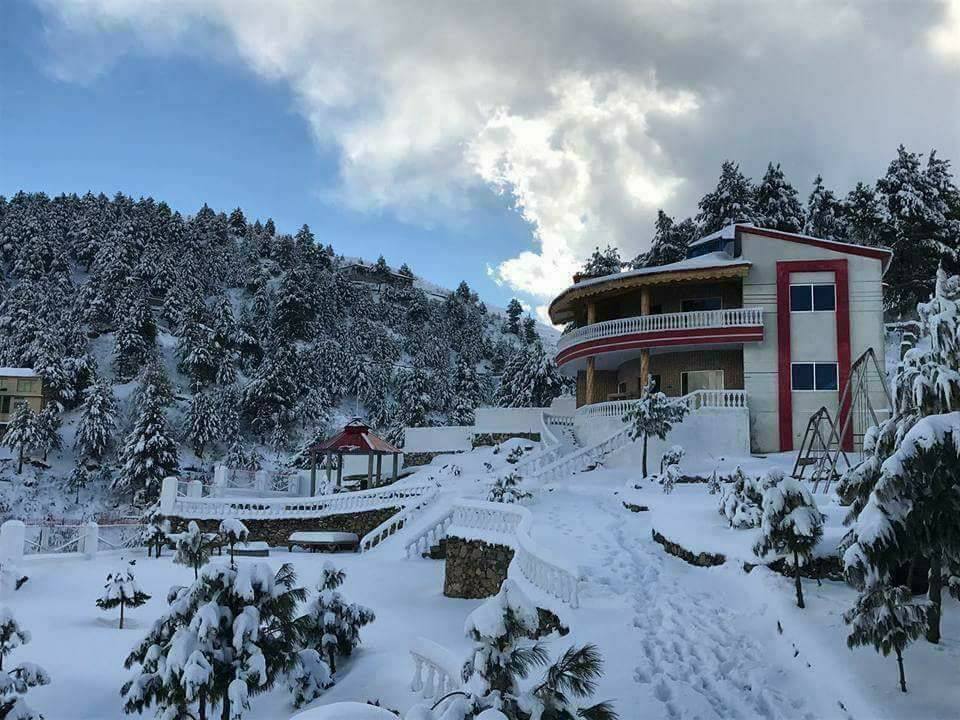
Per Person
2 days 1 night islamabad to malam jabba standard group tour winter/snowfall package
- 9-15 people
- |
- blue area → swat
- (10 reviews)
- Group Tours
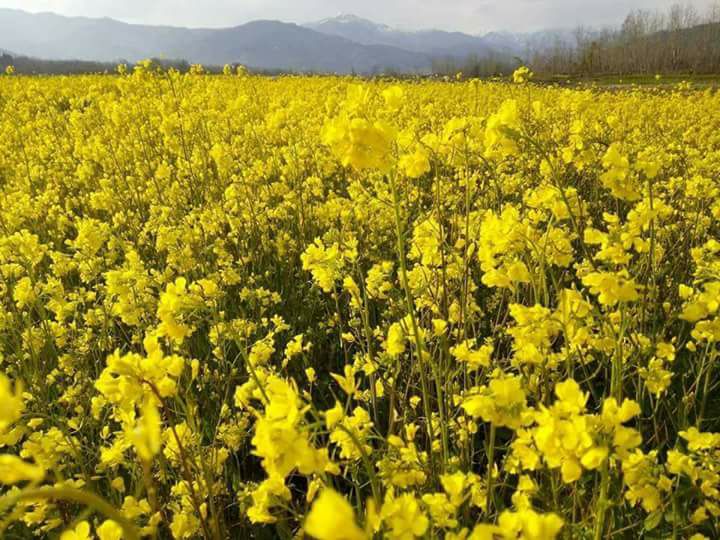
Per Person
2 days 1 night islamabad to gabeen jabba standard family tour winter/snowfall package
- 9-15 people
- |
- blue area → swat
- (6 reviews)
- Family Tours
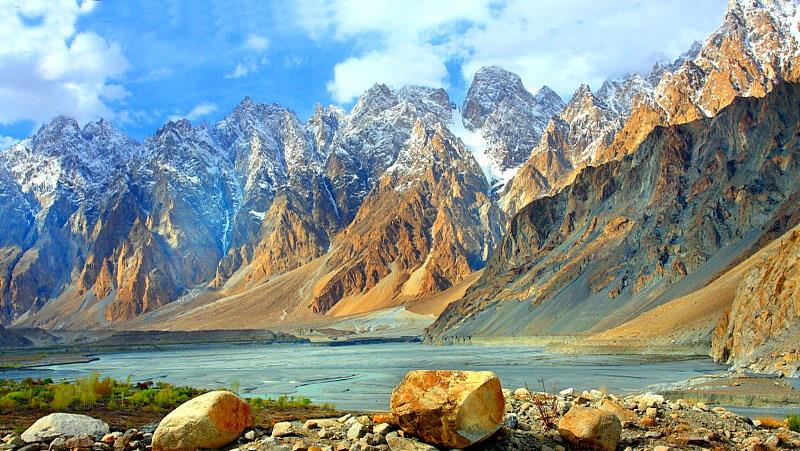
Per Person
6 days 5 nights islamabad to kalash valley standard group tour winter/snowfall package
- 9-15 people
- |
- blue area → chitral
- (6 reviews)
- Group Tours
